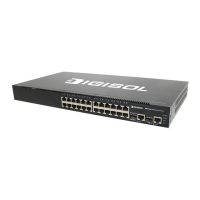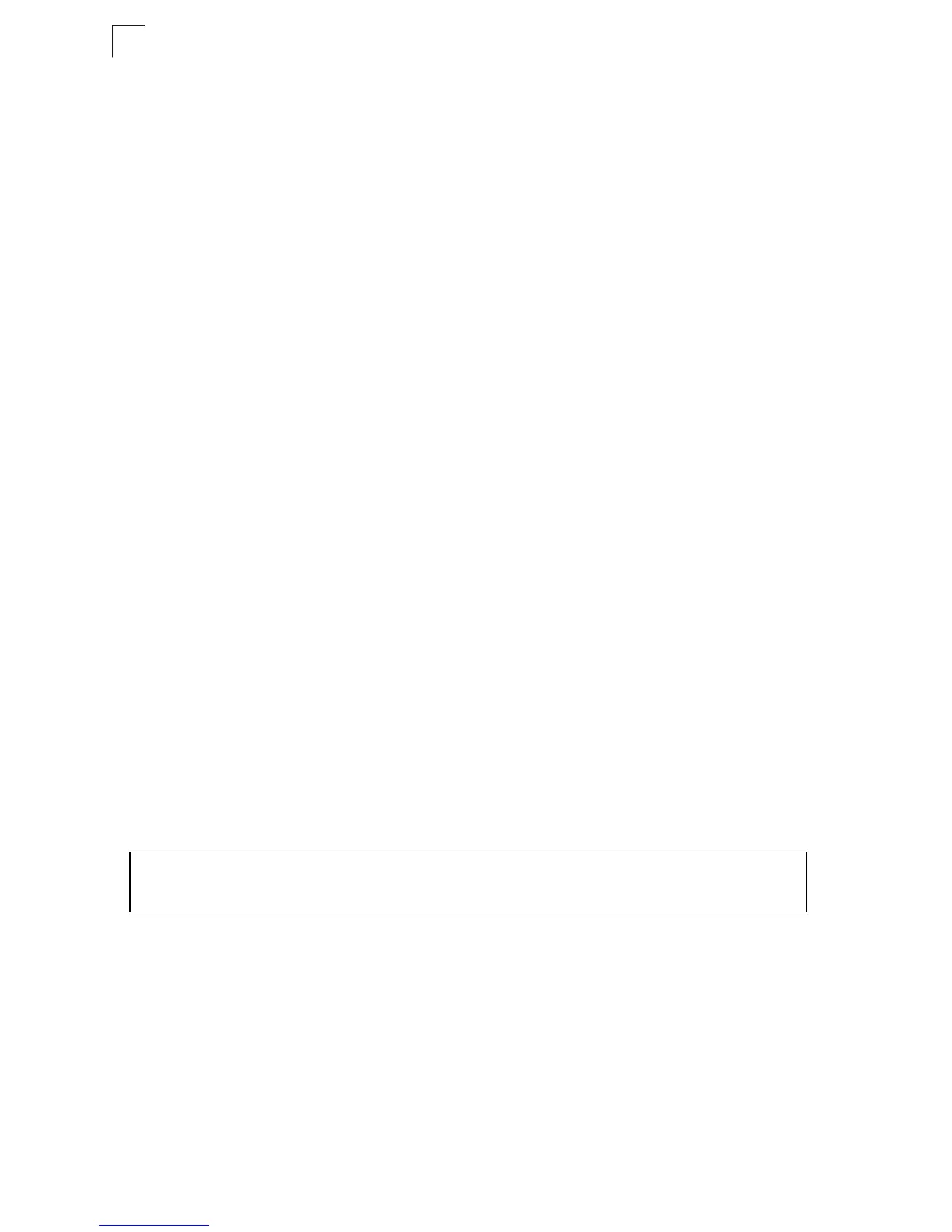Command Line Interface
4-262
4
www.digisol.com
Notes: 1. You can configure up to 16 rules per Class Map. You can also include
multiple classes in a Policy Map.
2. You should create a Class Map (page 4-262) before creating a Policy Map
(page 4-264). Otherwise, you will not be able to specify a Class Map with the
class command (page 4-264) after entering Policy-Map Configuration mode.
class-map
This command creates a class map used for matching packets to the specified
class, and enters Class Map configuration mode. Use the no form to delete a class
map and return to Global configuration mode.
Syntax
[no] class-map class-map-name [match-any]
• match-any - Match any condition within a class map.
• class-map-name - Name of the class map. (Range: 1-16 characters)
Default Setting
None
Command Mode
Global Configuration
Command Usage
• First enter this command to designate a class map and enter the Class Map
configuration mode. Then use the match command (page 4-263) to specify
the criteria for ingress traffic that will be classified under this class map.
• Up to 16 match commands are permitted per class map.
• The class map is used with a policy map (page 4-264) to create a service
policy (page 4-267) for a specific interface that defines packet classification,
service tagging, and bandwidth policing.
Example
This example creates a class map call “rd_class,” and sets it to match packets
marked for DSCP service value 3:
Related Commands
show class map (4-268)
Console(config)#class-map rd_class match-any
Console(config-cmap)#match ip dscp 3
Console(config-cmap)#

